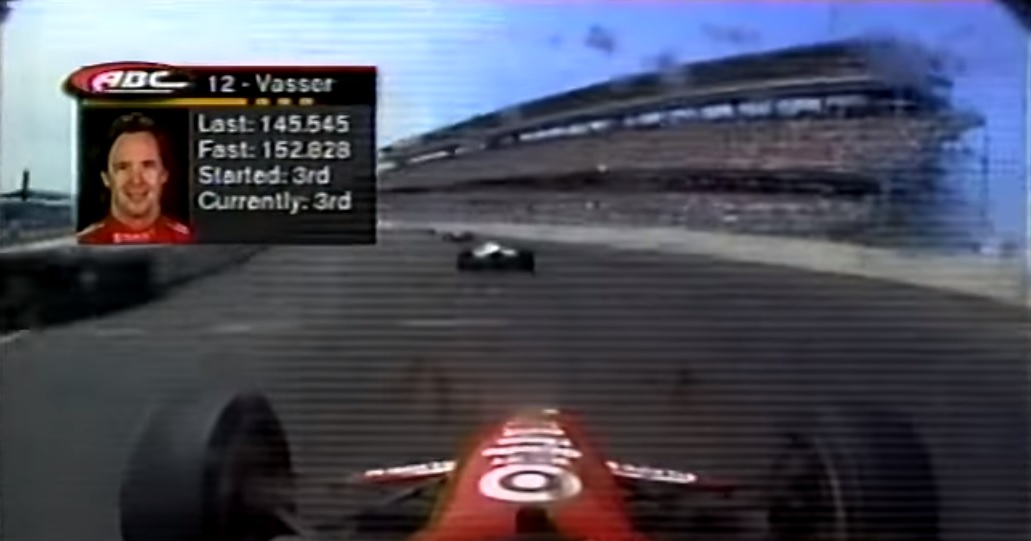The American open-wheel split still has a number of unhealed scars among fans who felt slighted, but the upshot was a number of weird little nuggets of recent racing history. Among those is that of Chicago Motor Speedway, the mile-long oval that preceded the cookie-cutter 1.5-mile Chicagoland Speedway. With the 1995 split between the Indy Racing League (IRL) and CART, both series needed more venues in which to race. A group of investors that included CART owner Chip Ganassi poured $70 million into building CMS in Cicero, Illinois, just west of Chicago.
The freshly paved oval encircled Sportsman’s Park, a one-mile horse-racing track, and hosted its first race August 22, 1999, in front of a packed crowd. Max Papis and Mark Blundell started on the front row of that first Target Grand Prix of Chicago, which had the start waved off three times before getting underway with lots of passing on the track. With long straights and tight, relatively flat turns with just six degrees of banking, it raced less like a very fast superspeedway and more like, say, New Hampshire Motor Speedway, which hosted IRL races until 1998.
That first 225-lap race featured a dominating performance from Ganassi’s brash young 23-year-old rookie, Juan Pablo Montoya. Montoya blew past Papis on lap 64 and aside from a few laps with Dario Franchitti at the helm, the Target-sponsored race belonged to Montoya’s Target-sponsored car. With the big-box retailer leaving open-wheel racing at the end of this IndyCar season, the Target-painted Reynard and announcer Paul Page are welcome throwbacks.
In 2000, Chicago Motor Speedway hosted the first win in America for an 18-year-old New Zealand native whose history is also synonymous with Target sponsorship: Scott Dixon. The Kiwi took home his first career victory in Indy Lights at CMS, then returned the following year to repeat and become the only driver to win in Indy Lights at the track. Dixon’s win in 2001 was part of his six wins in 12 starts that year en route to his first championship. A year later, he’d be driving in CART for Ganassi, whose cars he has driven ever since.
Chicago Motor Speedway’s life was to be short-lived. Even before CMS had opened, International Speedway Corporation already had plans approved for a 1.5-mile oval in Joliet just outside of suburban Chicago, adjacent to the Route 66 Raceway drag strip. Chicagoland Speedway opened in 2001, hosting IRL races annually and also taking the NASCAR races from the Cicero track. Combined with a location close enough to populated areas to elicit complaints and political pressures, Chicago Motor Speedway never really had a chance. CART held the final major race at CMS in July 2002 with Cristiano da Matta—who had won his first-ever CART race in 2000 at CMS—taking the victory en route to his first and only championship.
As happens so often, the track sat vacant briefly before being bulldozed. I’ve heard it rumored that some of the bleachers from CMS were torn down and rebuilt at Milwaukee Mile after Chicago Motor Speedway’s closing, though I’ve never been able to confirm if that is truly the case. (Milwaukee, coincidentally, auctioned off their bleacher addition for scrap value earlier this year.)
Today, the patch of land on which Chicago Motor Speedway sat—which is just a few miles from where I write this—is now a beverage distribution center and a Wal-Mart. Here’s a good GIF of CMS’ entire lifespan that my friend Dave Belland made using Google Earth images:
Here is that first Target Grand Prix of Chicago from 1999, where you can watch legendary racing drivers from many disciplinesy like Jan Magnussen (sports cars), Robby Gordon (Off-road trucks), and Bryan Herta (IndyCar team owner/strategist).












